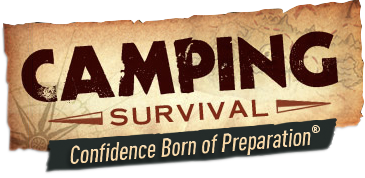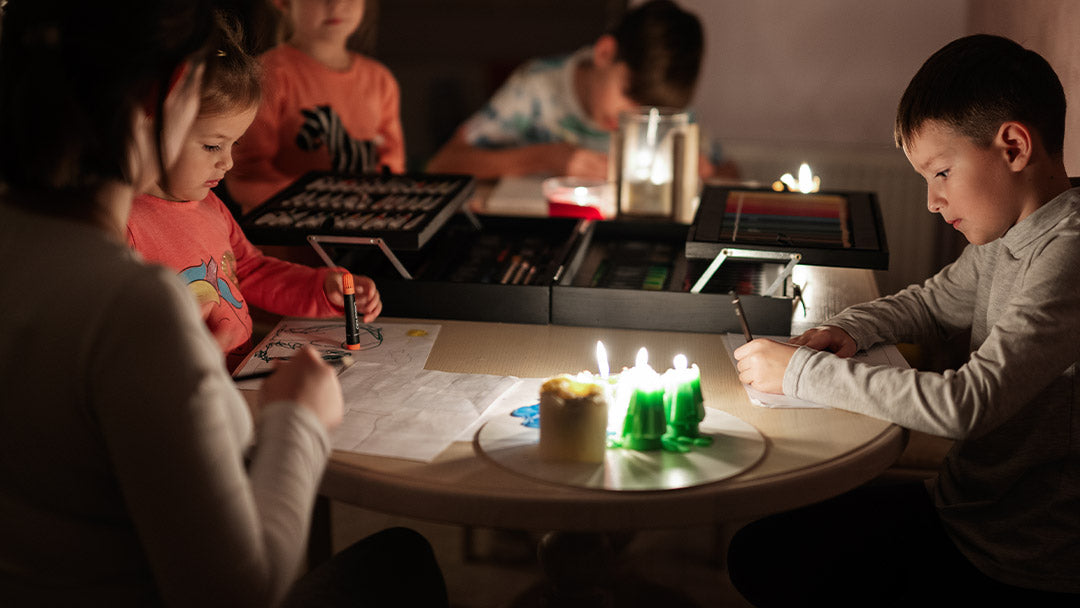Hey friends,
You ever feel like summer rolls in with one hand tossing sunshine and the other throwing down thunder?
Last week, we talked about the chaos and joy of camping with kids—muddy trails, messy marshmallows and all. This week, I’m staying a little closer to home, because where we live, summer storms are as regular as mosquito bites. And while I’ve learned to appreciate the rumble of thunder and that ozone scent in the air, my 10-year-old? Not so much.
He’ll never admit it, of course—but the second that sky cracks open and the wind rattles the windowpanes, he’s suddenly glued to my side like I’m the only safe harbor in a hurricane. I get it. Storms are loud, unpredictable, and for a kid (or let’s be honest, even an adult sometimes), they can be downright scary.
But as any parent knows, the real trouble often starts after the storm. That moment when the rain stops but the lights don’t come back on. The hum of the house goes silent. The fridge is dead, the internet's down, and the kids are standing in the living room like "Now what?"
Let’s talk about that moment.
When the Power’s Out but the Kids Aren’t
The truth is, summer storms can knock out power for hours—or days. A few years back, we had a wicked one blow through. Trees down, driveway flooded, power out for a full 36 hours. I’ll tell you what saved our sanity: being prepared, not just for the storm itself, but for the aftermath.
Here are a few things we keep on hand that have made all the difference—and might help you too.
1. A Backup Power Plan (That Doesn’t Involve Gas)
I’m talking about a portable solar generator. Our Grid Doctor Solar Generator has been a lifesaver, literally and figuratively. It’s quiet, safe to use indoors, and powerful enough to keep phones charged, a fan running, and even a few lights on while we ride it out. Bonus: no gas cans or fumes to worry about.
2. Light Where You Need It Most
We’ve got a few emergency lanterns with built-in power banks scattered around the house—one in the living room, one in the kitchen, and one by our son’s bed. They’re bright, easy to carry, and yep, they charge your phone too. Because let’s be honest, when the power’s out and the storm’s still growling outside, a little glow can go a long way for everyone’s nerves.
3. Waterproof Matches & Ponchos (Just in Case)
A few years back, I had to clear storm debris from the end of our drive during a downpour. Nothing like trying to fix a flood while getting soaked to the bone. Now I keep a couple ponchos near the door and waterproof matches in our supply bin. They take up no space and might just be your best friend when the rain won’t quit.
4. Stormy Night Snacks & Quick Meals
Kids get hungry, storm or no storm. And let me tell you, there's no quicker way to a meltdown (from them or me) than hearing "I'm hungry" when the stove won’t work. We keep a stash of Beyond Outdoor Meals—real meat, easy prep, and shelf-stable for years. They’re not just emergency food; they’re peace of mind in a pouch.
5. Distraction Is Half the Battle
While I’m checking on neighbors or waiting for updates, my wife’s pulling out a deck of cards, some coloring books, or our son’s favorite puzzle. We’ve learned that keeping his hands and mind busy helps him forget what’s going on outside the windows. And once the lights flicker back on and the wifi kicks in? He barely remembers the storm.
But until then, being ready, really ready can be the difference between panic and peace.
One Last Thing…
We don’t prep out of fear. We prep because we’ve got people we love, and we want to keep them safe, calm, and maybe even laughing during a summer squall. That’s the heart of what we do around here: plan for the worst, enjoy the best, and be ready for everything in between.
Until next time—
Stay dry, stay steady, and never trust a cloud with a mean look in its eye.
—Thomas Hawkins, Camping Survival






0 comments